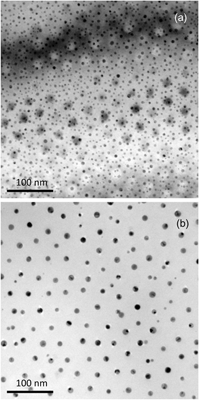Crossref Citations
This article has been cited by the following publications. This list is generated based on data provided by
Crossref.
Pech, David
Brunet, Magali
Durou, Hugo
Huang, Peihua
Mochalin, Vadym
Gogotsi, Yury
Taberna, Pierre-Louis
and
Simon, Patrice
2010.
Ultrahigh-power micrometre-sized supercapacitors based on onion-like carbon.
Nature Nanotechnology,
Vol. 5,
Issue. 9,
p.
651.
Puglisi, R. A.
Mannino, G.
Scalese, S.
La Magna, A.
and
Privitera, V.
2012.
Silicon Nanowires Obtained by Low Temperature Plasma-Based Chemical Vapor Deposition..
MRS Proceedings,
Vol. 1408,
Issue. ,
Garozzo, C.
Bongiorno, C.
La Magna, A.
and
Puglisi, R. A.
2012.
Pattern Transfer of Nanomasks Based on Diblock Copolymers Self-Assembling through Reactive Ion Etching.
ECS Journal of Solid State Science and Technology,
Vol. 1,
Issue. 3,
p.
Q52.
Garozzo, C.
Giannazzo, F.
Italia, M.
La Magna, A.
Privitera, V.
and
Puglisi, R.A.
2013.
Radial junctions formed by conformal chemical doping for innovative hole-based solar cells.
Materials Science and Engineering: B,
Vol. 178,
Issue. 9,
p.
686.
Wang, Dong
and
Schaaf, Peter
2013.
Solid-state dewetting for fabrication of metallic nanoparticles and influences of nanostructured substrates and dealloying.
physica status solidi (a),
Vol. 210,
Issue. 8,
p.
1544.
Garozzo, C.
Filetti, A.
Bongiorno, C.
La Magna, A.
Simone, F.
and
Puglisi, R. A.
2014.
Room temperature evolution of gold nanodots deposited on silicon.
Gold Bulletin,
Vol. 47,
Issue. 3,
p.
185.
Wong, S.
Shalav, A.
Ruffell, S.
Bradby, J. E.
Field, M. R.
McCulloch, D. G.
and
Elliman, R. G.
2014.
Formation of ordered arrays of gold particles by nanoindentation templating.
physica status solidi (RRL) – Rapid Research Letters,
Vol. 8,
Issue. 1,
p.
48.
Ruffino, Francesco
and
Grimaldi, Maria Grazia
2015.
Controlled dewetting as fabrication and patterning strategy for metal nanostructures.
physica status solidi (a),
Vol. 212,
Issue. 8,
p.
1662.
Hughes, Robert A
Menumerov, Eredzhep
and
Neretina, Svetlana
2017.
When lithography meets self-assembly: a review of recent advances in the directed assembly of complex metal nanostructures on planar and textured surfaces.
Nanotechnology,
Vol. 28,
Issue. 28,
p.
282002.
Capek, Ignác
2017.
Noble Metal Nanoparticles.
p.
415.
Menumerov, Eredzhep
Golze, Spencer D.
Hughes, Robert A.
and
Neretina, Svetlana
2018.
Arrays of highly complex noble metal nanostructures using nanoimprint lithography in combination with liquid-phase epitaxy.
Nanoscale,
Vol. 10,
Issue. 38,
p.
18186.
Puglisi, Rosaria A.
Bongiorno, Corrado
Caccamo, Sebastiano
Fazio, Enza
Mannino, Giovanni
Neri, Fortunato
Scalese, Silvia
Spucches, Daniele
and
La Magna, Antonino
2019.
Chemical Vapor Deposition Growth of Silicon Nanowires with Diameter Smaller Than 5 nm.
ACS Omega,
Vol. 4,
Issue. 19,
p.
17967.
Preston, Arin S.
Hughes, Robert A.
Demille, Trevor B.
Rey Davila, Victor M.
and
Neretina, Svetlana
2019.
Dewetted nanostructures of gold, silver, copper, and palladium with enhanced faceting.
Acta Materialia,
Vol. 165,
Issue. ,
p.
15.





